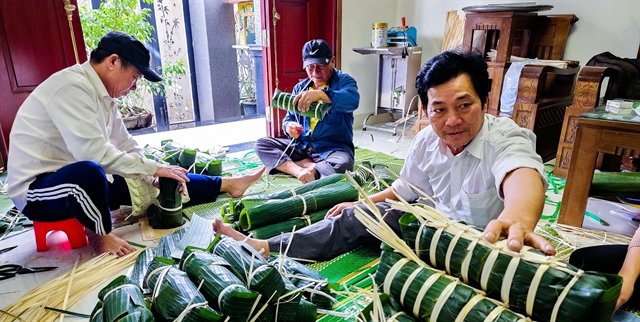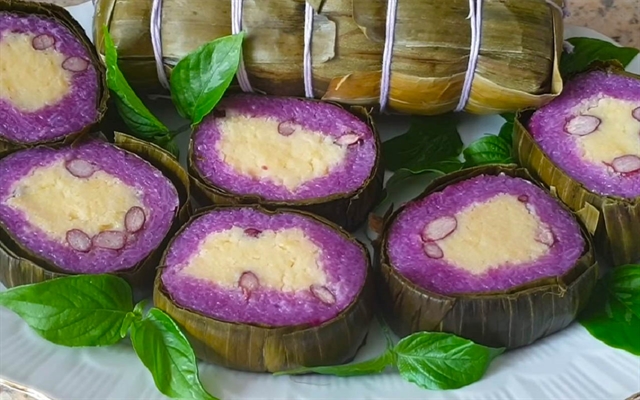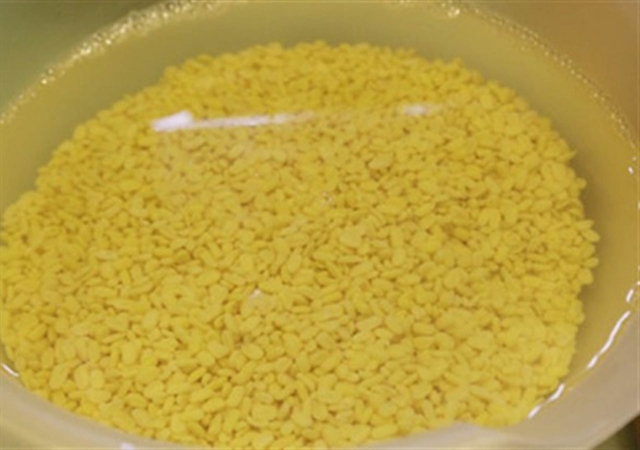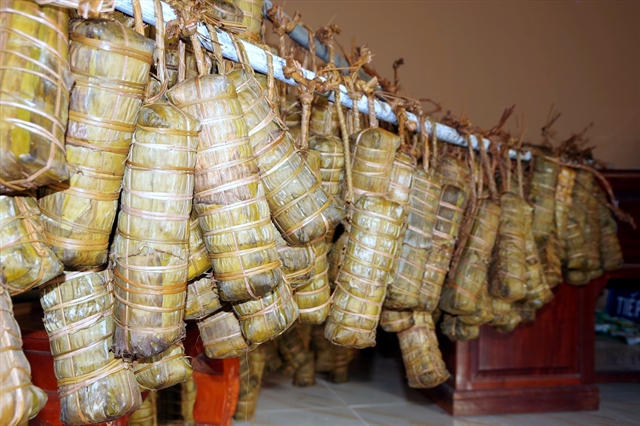 Life & Style
Life & Style

Hoàng Lan
The round glutinous rice cake, locally known as bánh tét, has been recognised by TasteAtlas as one of the world top 100 tastiest dishes. This dumpling cake is Việt Nam’s only representative in the list, ranking at number 47.
In the past, it was only for welcoming Tết (traditional lunar festival), but now the cake is made year-round to meet increasing demand. Touchingly, it was made to support victims of the recent terrible Typhoon Yogi that caused serious floods and landslides in the northern region.
“Bánh tét is a symbol of human love and of close connection during most difficult circumstance like severe floods,” said Taste Atlas.

|
| Makers in a southern province wrapping round rice cakes, or 'bánh tét', to send to northern flood victims, hit by Typhoon Yagi. Photo toquoc.vn |
Introducing bánh tét, TasteAtlas said that it is the traditional indispensable dish of southern people. They also make the cake to celebrate anniversaries of deaths and as a gift for relatives and friends.
There are two sorts of bánh tét. Vegetarian one is made of glutinous rice and green bean or black bean in the form of a dumpling and salted cake. The other includes glutinous rice, green bean, bacon, or pork fat, which forms a softer cake and can also last for a longer time, said local Hoàng Thùy Liên from the southern province of Cần Thơ.

|
| Many local households in the southern province of Cần Thơ often use wild forest magenta leaves to dye glutinous rice to make fragrant and tasty 'bánh tét'. Photo nucuoimekong.com |
To have a fragrant and tasty bánh tét with an original flavour, it depends on the maker’s skills, as those are first set by choosing banana leaves and bamboo string, said Liên, adding that making bánh tét is not an easy task. First, the maker has to spread banana leaves on a tray, put on glutinous rice before putting boiled green beans and several pieces of bacon or pork fat on top, then wrap the dumpling up securely, using bamboo string to tie it tightly.
“It is more enjoyable when eaten with sour pickles, salted carrot and kohlrabi, pickled scallion heads and dipped in soy sauce mixed with chilli,” said Liên.
Liên said glutinous rice should be soaked into water for eight hours, while green beans also needed to be soaked for four hours. These ingredients are left to drain. Bacon or pork fat is cut into pieces and mixed together with salt, fish sauce and peppers, then left for an hour before wrapping.

|
| Vietnamese green beans are considered to be the tasty great ingredient to help 'bánh tét' win TasteAtlas' recognition. Photo vienmaytinh.com |
Liên said wrapping the cake requires maker’s skills to ensure the cake is in a perfect condition meeting the traditional standards appealing to the foodies.
During the recent severe storm Yagi that forced thousands of people to evacuate, images of many southern and central creators of the dish were seen sitting together to make bánh tét as gifts to northern flood victims.
“Despite being transported from the southern and central regions to the north, the cakes are still tasty with their original flavour, fragrant, buttery from the green beans and fatty with the pork because they had been carefully wrapped and boiled for 12 hours,” said Liên, adding that makers were happy to share their dish of comfort with disadvantaged people.

|
| In the past locals often hung bánh Tét to eat after Tết. Photo laodong.vn |
Master Chef Phạm Tuấn Hải said bánh tét looks like an image of a mother holding her child, so the cake carries a significant meaning of unification and is imbued with the value of intimacy and care.
In TasteAtlas list, Mexico’s Sopa Tarasca ranked first, Haiti’s Diri ak Pwa ranked second and Colombia’s Calentado ranked third.
Established since 2015 and headquarters in Croatia’s Zagreb, TasteAtlas has become the go-to culinary world map, collecting traditional tasty dishes across the globe.
According to Taste Atlas’s founder, Matija Babic, rating lists of dishes and drinks are based on ideas and evaluations of culinary experts and commentators to ensure the prize’s credibility. VNS




